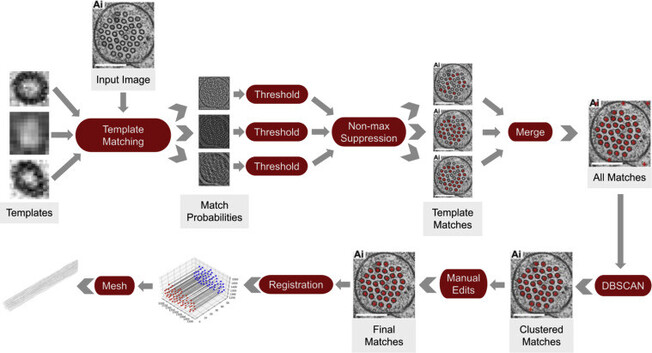Its #wormwednesday Time for a #tweeprint. The amazing Lucy M. Wang wanted to model the mechanics of axonal microtubule bundles. 1/n https://authors.elsevier.com/a/1gE6d1SPT0Mzq#.Y5otMvV6Res.twitter
To do this, she developed an ML-inspired image processing pipeline to detect microtubule cross-sections in serial-section electron micrographs. 2/n
Applied to a dataset collected in the @wormsenseLab@twitter.com >10 years ago and preserved at the Stanford Digital Repository 3/n http://purl.stanford.edu/gq316wm6430
Wang turned these images into an aligned movie. Fun to watch, but might load slowly (its big) 4/n https://www.sciencedirect.com/science/article/pii/S0006349522038644?dgcid=author#mmc2
Next, she set about modeling the mechanics of the bundle in comparison to homogenous models in which MTs are a uniform length and organized in a uniform array. 5/n
Homogenous models are stiffer than image-based ones & failure points are not evenly distributed. These findings suggest that efforts to understand axonal vulnerability to mechanical damage might under-estimate axonal sensitivity 6/n
Huge congratulations to Lucy M. Wang who started this project during the depth of the coronavirus pandemic & persisted to generate a tool that may find application to EM datasets and new insight into axonal mechanics. n/n

